
-
About
The Website The Birds Maps Virtual Tour Email us
- Library
- Essays
Eric Dinerstein Bill Young- Plants
- Birds
Year-round Resident Has Nested near Park
Fish Crow
Corvus ossifragus
Year-round Resident American Crows are year-round residents at Monticello Park and nest in the neighborhood near the park. Fish Crows are year-round residents who do not nest in the park. They prefer habitat closer to water.
Where to See Them in the Park
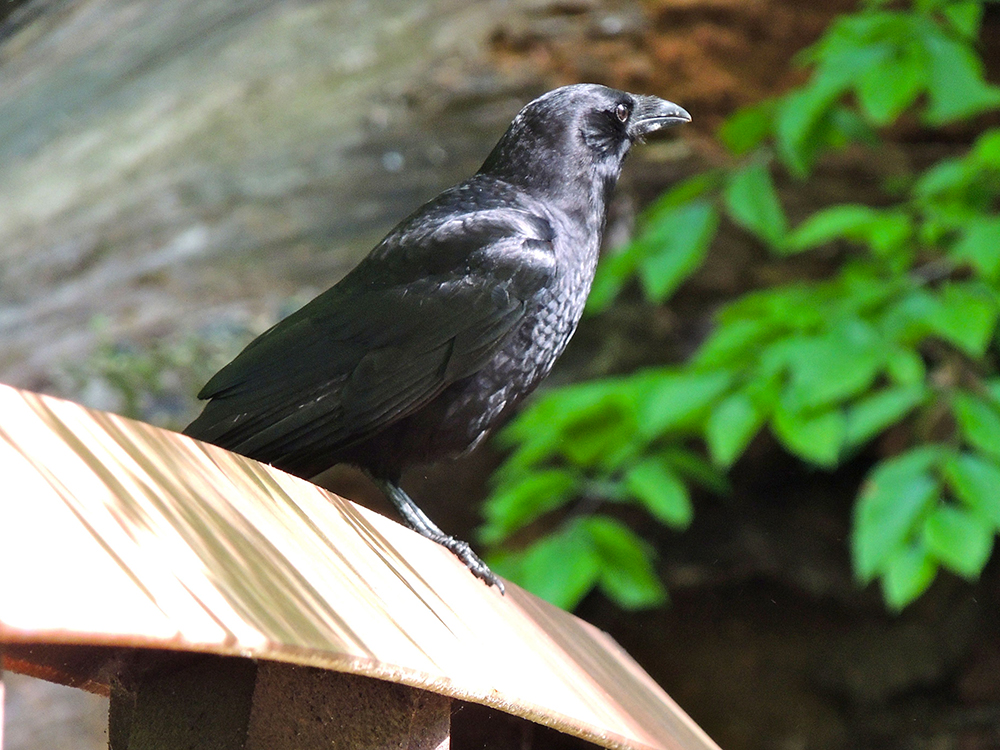 American - Photo by William Young
American - Photo by William YoungAmerican Crows can be seen and heard regularly at Monticello. They spend a lot of time high in trees, sometimes in large groups. They occasionally go into the stream or perch near or on the bridge. Fish Crows are mostly seen and heard as they fly over the park. The number of Fish Crow flyovers has increased in recent years.
Physical Descriptions
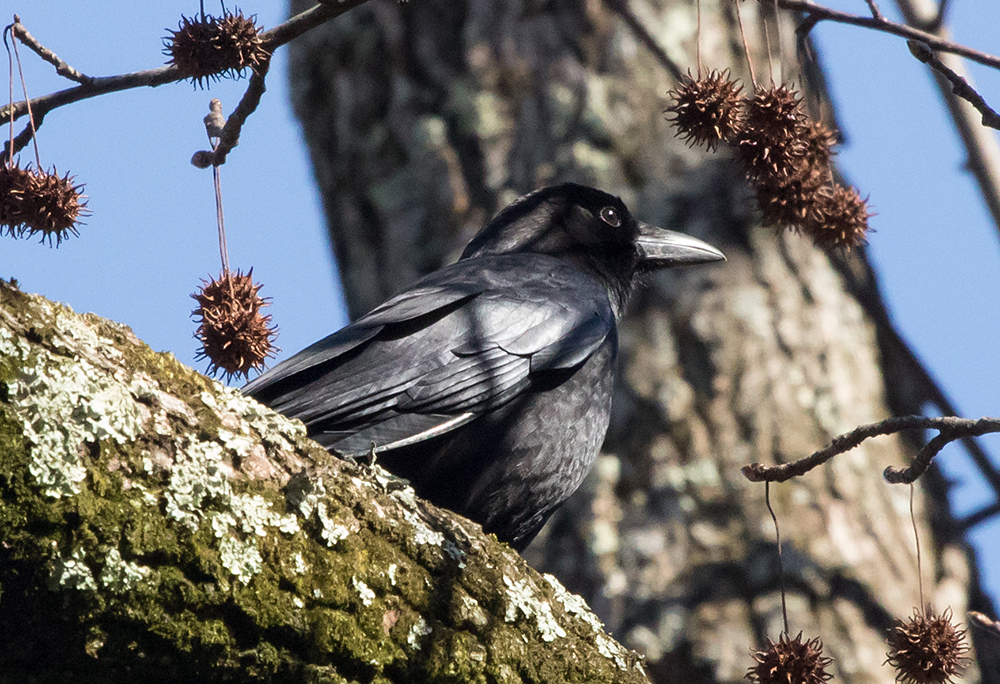 American - Photo by Ashley Bradford
American - Photo by Ashley Bradford
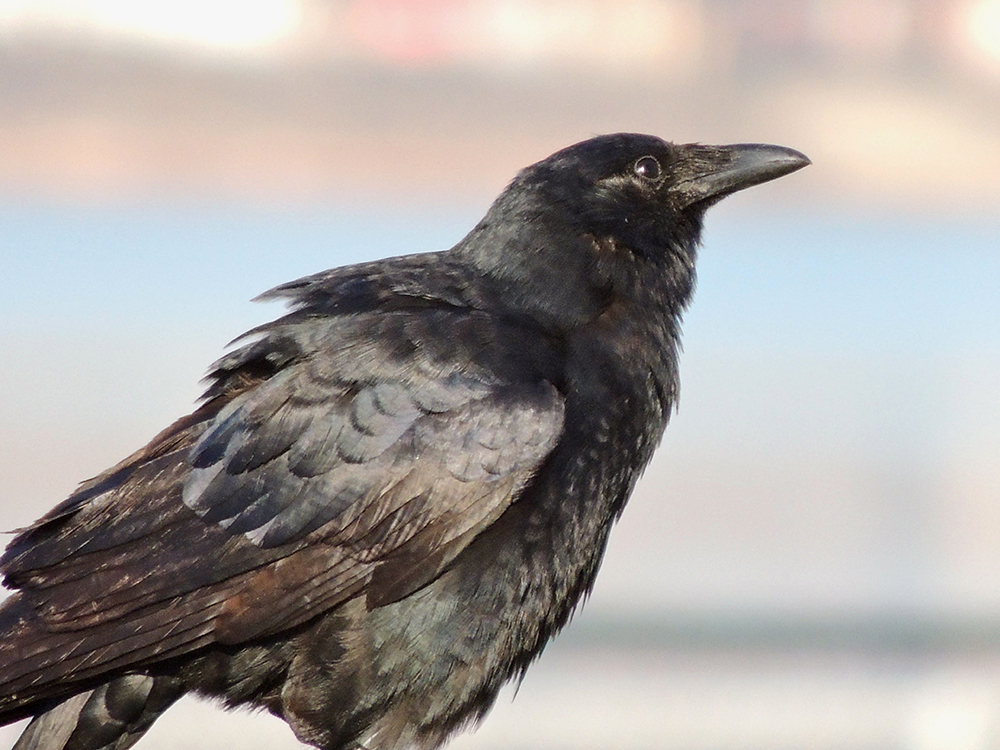 Fish - Photo by William Young
Fish - Photo by William YoungThe plumage of both species of crows is all black. The sexes look alike, and adult plumage is the same in the spring and fall. Telling the two species apart is very difficult if you do not hear them vocalizing.
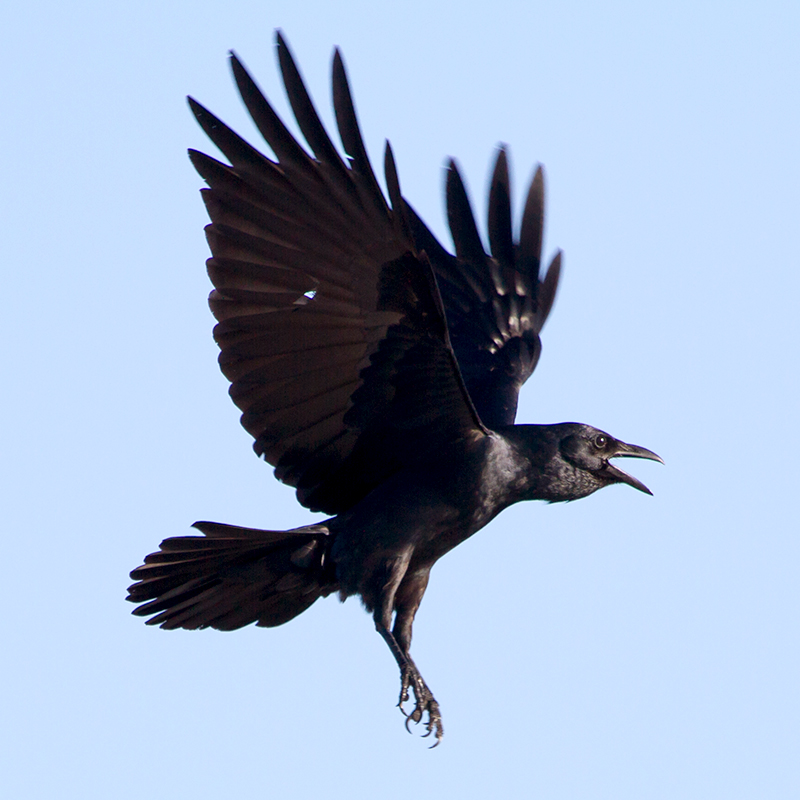 Fish - Photo by Ashley Bradford
Fish - Photo by Ashley Bradford
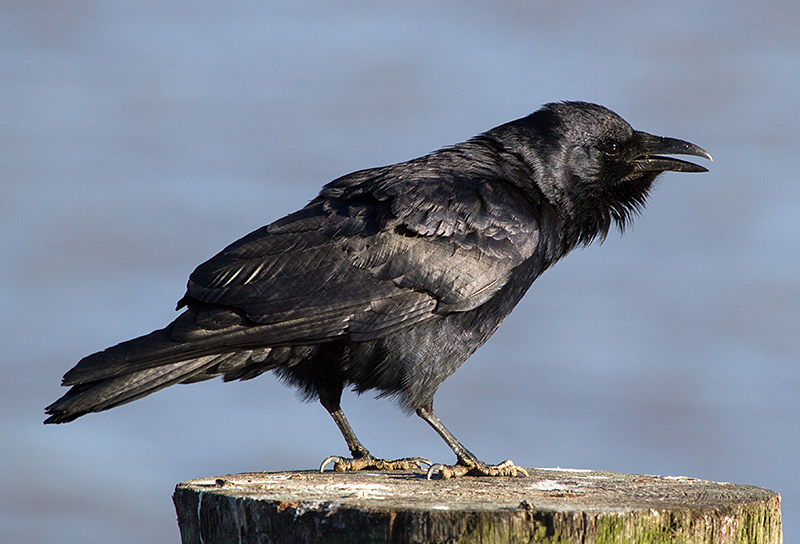 Fish - Photo by Ashley Bradford
Fish - Photo by Ashley BradfordFish Crows are slightly smaller than the American Crow, and their bill is not as large. These differences can be difficult to see unless the two species are next to each other. A lot of Fish Crows can be seen at the Belle Haven Marina, where you can observe their features and behavior.
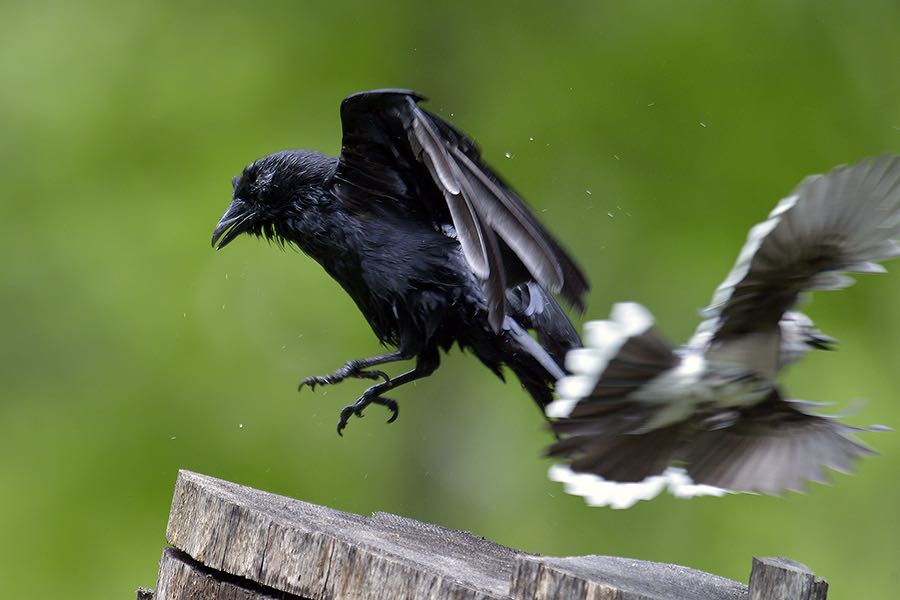 American Crow and Blue Jay - Photo by Michael Pollack
American Crow and Blue Jay - Photo by Michael PollackAmerican Crows can be loud and raucous. Sometimes if a hawk or an owl is in the park, crows will vocalize loudly and mob it. Other times, the crows will produce their mobbing vocalizations to make other birds think that an owl or hawk is in the park, even though none is there. By doing this, the crows might see where the resident species nest and later go to the nests to eat the eggs and/or nestlings. Crows regard hawks and owls as threats to their eggs and young. Similarly, songbirds who nest at Monticello regard crows as threats to their eggs and young, and with good reason. Blue Jays, who are in the same family as crows, nest at Monticello, and they sometimes aggressively chase crows away.
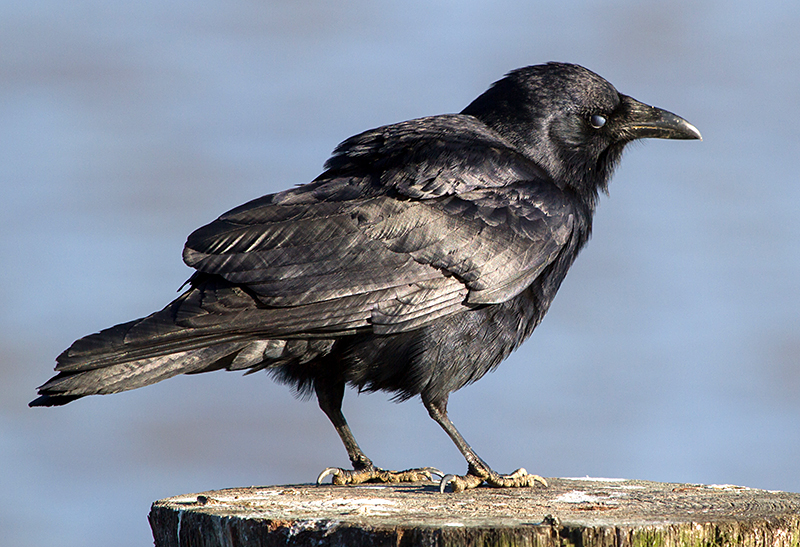 Nictitating Membrane of Fish Crow - Photo by Ashley Bradford
Nictitating Membrane of Fish Crow - Photo by Ashley BradfordAll birds have a nictitating membrane, which is a third eyelid which can be drawn across the eye while still allowing a bird to see. It is transparent and translucent, and it moistens and provides protection for the eye. The little red ball in the corner of the human eye (near the bridge of the nose) is a vestige of a nictitating membrane.
Vocalizations
American Crows have a broad repertoire of calls. The most familiar is caw-caw-caw. The most common call of Fish Crows is more nasal and sounds like unh-unh. They also utter single note calls. Sometimes American Crows utter calls that are deeper and more nasal than their typical cawing, and they sound like Fish Crows.
Hear the calls of the American Crow.
Hear the calls of the Fish Crow.Notes
The intelligence of crows and other corvids has been well documented. Crows are capable of remembering faces and solving complex puzzles. The intelligence of crows is examined at length in the book Gifts of the Crow: How Perception, Emotion, and Thought Allow Smart Birds to Behave Like Humans, by John Marzluff and Tony Angell. Dr. Marzluff's work is also featured in a documentary about the intelligence and behavior of crows.
Origin of Names
Common Names: American from where they live. Fish from spending a lot of time near water and sometimes scavenging fish. Crow comes from the Anglo-Saxon crawe, which is a representation of their call.
Genus Name: Corvus is Latin for crow.
Species Names: Brachyrhynchos means short bill, possibly when compared to a raven. Ossifragus means bone-breaker, named by Alexander Wilson for an unknown reason.American Crow video footage
Fish Crow video footage
Return to the Index